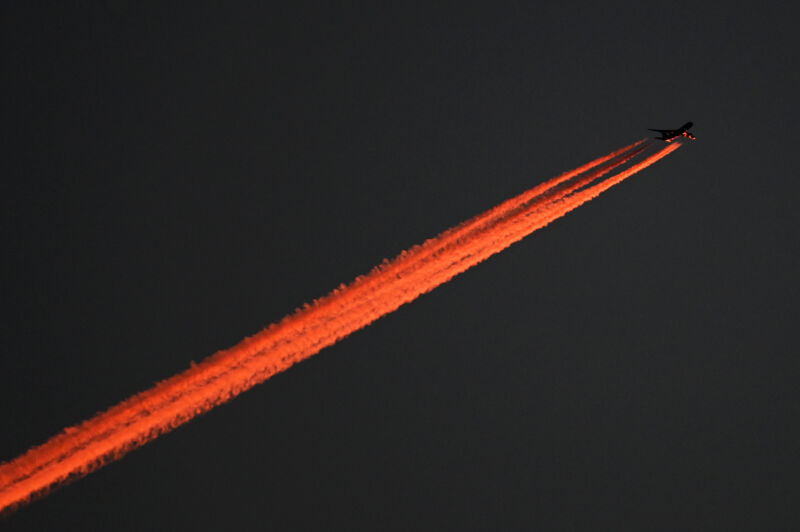[ad_1]

Enlarge / The evening sun colors the underside of the Boeing 747 and the following contrail red in Berlin in 2021. (credit: Soeren Stache/Picture Alliance/Getty )
Jet A-1, a straw-colored, kerosene-based fuel used in most big airplanes, is a difficult substance to replace. It’s packed with energy; per unit of weight, at least 60 times as much as the lithium-ion batteries used to propel electric cars. It’s also terrible for the climate. So as the aviation industry has gradually climbed aboard global pledges to get rid of carbon emissions, it has mostly promised to make up for its damage elsewhere—through offsets that might involve planting trees, restoring wetlands, or paying people to preserve ecosystems that otherwise would have been razed. But according to a growing body of research, those efforts leave something out: Most of the planet-warming effects of flying aren’t from carbon dioxide.
Burning jet fuel at 35,000 feet sparks a molecular cascade in the troposphere. The initial combustion releases a shower of particles—sulfur, nitrogen oxides, soot, and water vapor. At those frigid heights, some of the particles become nuclei around which condensation gathers and then quickly freezes, helping to produce puffy contrails that either vanish or persist as wispy, high-altitude cirrus clouds. In the presence of the Sun’s rays, nitrogen molecules set off a chain of reactions that produce ozone and destroy free-floating atmospheric methane. It’s tough to pin down the meaning of all this chemistry. Some of these reactions, like the methane destruction, help cool the Earth. Others warm it. It all depends on the atmospheric conditions for each flight, multiplied across tens of thousands of planes streaking across the sky each day.
Read 10 remaining paragraphs | Comments
[ad_2]
Source link
